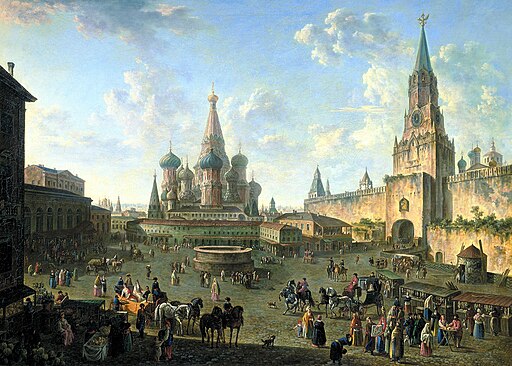
The “Album of Tournaments and Parades in Nuremberg” is a 112-sheet manuscript which includes depictions of contestants equipped for tournaments called a “carousel.”
The manuscript shows a parade of participants in tournaments known as “bachelors’ jousts,” held in Nuremberg between 1446 and 1561. The depictions include pageant sleighs used in ceremonies.
The illustrations are the work of a letter painter, whose chief occupation was creating official documents and coats-of-arms.
Many of the tournament participants have their names written above their illustration. They are armed to fight a joust with blunt lances.
This album provides a valuable record of the jousters’ costumes, fanciful crests, and the sometimes humorous or satirical emblems that decorated the jouster’s shields and horse trappings.
15th – 16th Century Nuremberg
Nuremberg in Germany had a cultural flowering in the 15th and 16th centuries, which made it the center of the German Renaissance.
In 1525, Nuremberg accepted the Protestant Reformation, and shortly later, the religious Peace of Nuremberg, by which the Lutherans gained necessary concessions, was signed in Nuremberg.
German Renaissance
The German Renaissance was a cultural and artistic movement that spread among German thinkers in the 15th and 16th centuries.
Many areas of the arts and sciences were influenced, notably by the spread of Renaissance humanism to the various German states and principalities.
There were many advances, and two developments dominated the 16th century, printing and the Protestant Reformation.
Early Carousels
The modern carousel emerged from old jousting traditions in Europe. Knights would gallop in a circle while tossing balls from one to another.
This game was introduced to Europe at the time of the Crusades from earlier eastern traditions. Early Carousels were used to ready and strengthened the riders for real combat as they wielded their weapons.
Album of Tournaments and Parades in Nuremberg
- Title: Album of Tournaments and Parades in Nuremberg
- Date: late 16th–mid-17th century
- Geography: Nuremberg
- Materials: Pen and ink, watercolor, gold and silver washes; paper bound in gold-tooled leather
- Culture: Nuremberg, German
- Dimensions: Page: 13 5/8 x 9 7/8 in (34.61 x 25.08 cm)
- Museum: Metropolitan Museum of Art – MET
Album of Tournaments and Parades in Nuremberg late 16th–mid-17th century German
MET European Paintings Collection
- “Pygmalion and Galatea” by Jean-Léon
- “Saint Jerome as Scholar” by El Greco
- “Portrait of Juan de Pareja” by Diego Velázquez
- “Camille Monet on a Garden Bench” by Claude Monet
- “View of Toledo” by El Greco
- “The Musicians” by Caravaggio
- “The Death of Socrates” by Jacques-Louis David
- “The Harvesters” by Pieter Bruegel the Elder
- “Young Woman Drawing” by Marie-Denise Villers
- “The Grand Canal, Venice” by J. M. W. Turner
- “The Houses of Parliament (Effect of Fog)” by Claude Monet
- “Madame Cézanne in a Red Dress” by Paul Cézanne
Album of Tournaments and Parades in Nuremberg
MET American Wing Collection
- “Washington Crossing the Delaware” by Emanuel Leutze
- “Portrait of Madame X” by John Singer Sargent
- “Mother and Child” by Mary Cassatt
- “Fur Traders Descending the Missouri” by George Caleb Bingham
- “The Gulf Stream” by Winslow Homer
~~~
“Premature success is often short-lived.“
– German Proverb
~~~
Photo Credit: 1) Metropolitan Museum of Art [CC0], via Wikimedia Commons
Popular this Week








 Sponsor your Favorite Page
Sponsor your Favorite Page SEARCH Search for: Search Follow UsJoin – The JOM Membership Program
Sponsor a Masterpiece with YOUR NAME CHOICE for $5
Share this:
- Tweet
